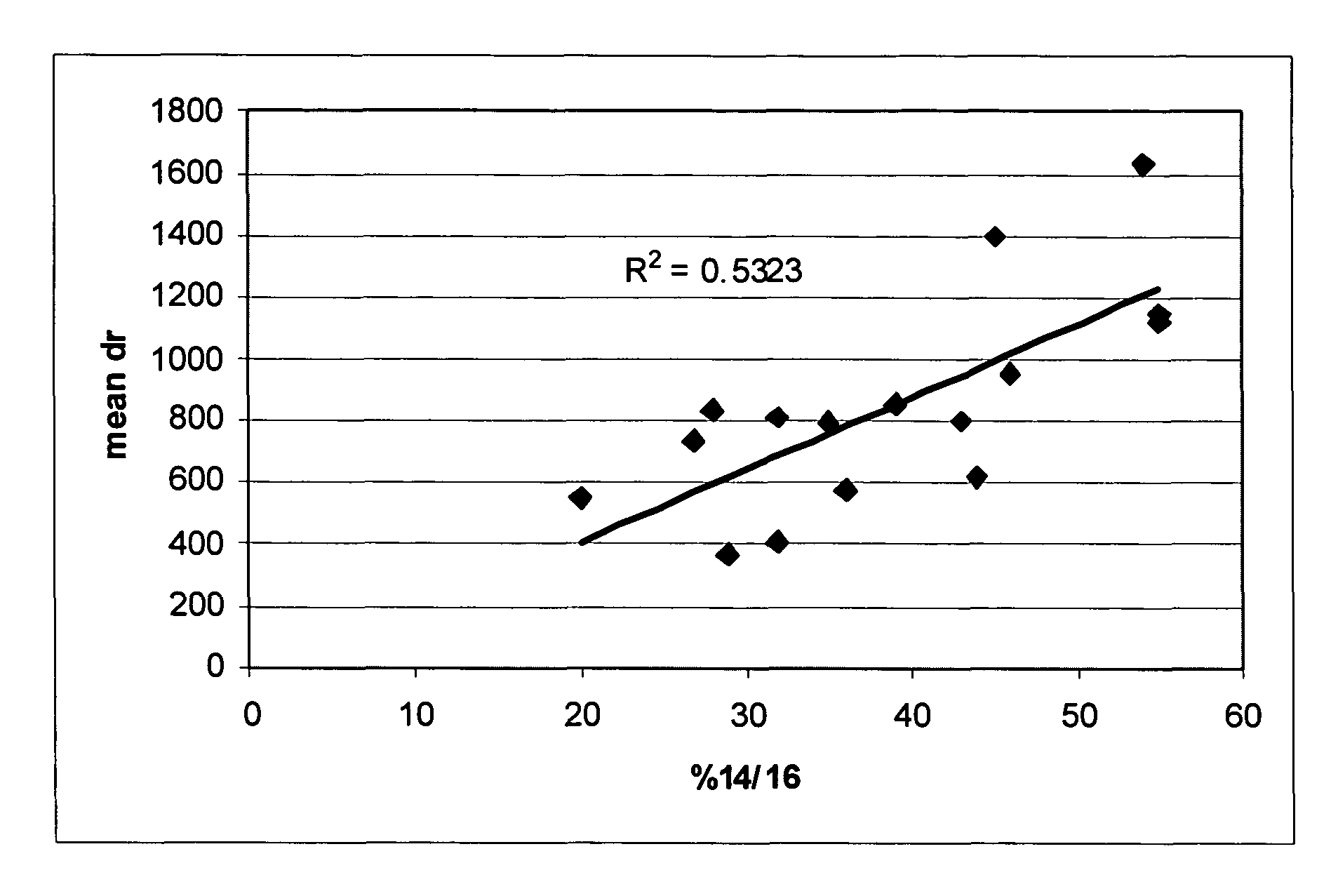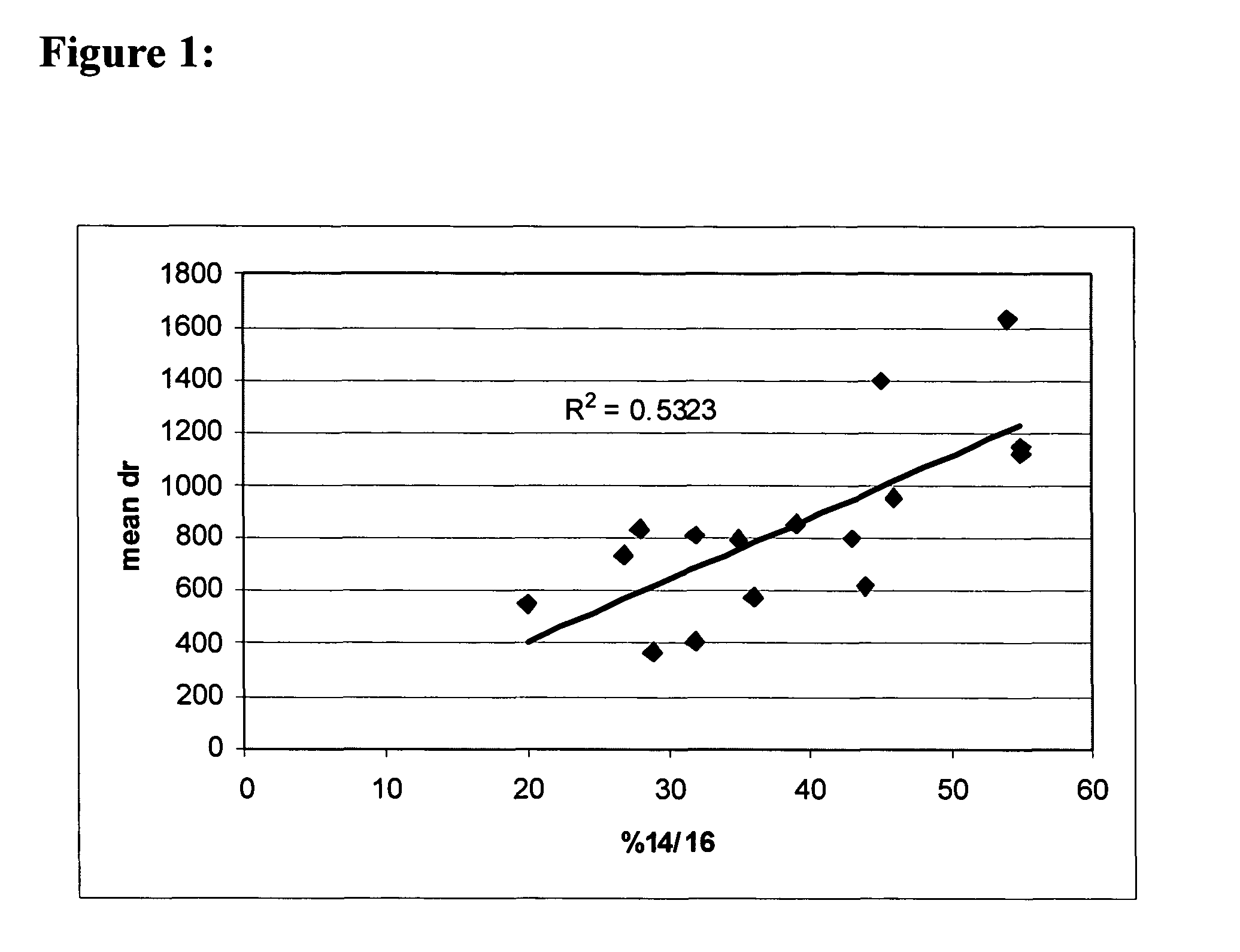Methods for modulating macrophage proliferation in ocular disease using polyamine analogs
a technology of polyamine analogs and macrophages, which is applied in the field of diseases associated with proliferating macrophages, can solve problems such as vision loss and macula atrophy, and achieve the effect of increasing the frequency of follow-up visits
- Summary
- Abstract
- Description
- Claims
- Application Information
AI Technical Summary
Benefits of technology
Problems solved by technology
Method used
Image
Examples
example 1
Immune Cell Activiation in Wet and Dry ARMD
[0159]The purpose of this example was to determine levels of immune activation on peripheral blood monocytes and T-cells in subjects with ARMD. Further, the purpose was to determine whether levels of peripheral activation were correlated with clinically determined levels of drusen progression. Immune cell activation markers of choice included HLA-DR, CD16 (FC gamma III), and CD38.
Methods and Materials:
[0160]Subjects. The study included 32 subjects with ARMD (9 dry, 23 wet), and from 10 age-matched control subjects. Macular drusen were graded from 1 to 4 on basis of size, number, soft vs. hard & associated pigment abnormalities. The grades of macular drusen were not disclosed to the laboratory assessing macrophage abnormalities. Fundus photographs (see Results) illustrate the different grades. Table I provides the drusen scores in the right and left eyes of each of the ARMD subjects in the study. Unless specifically indicated, all subsequent...
example 2
Effect of Polyamine Analogs on Macrophage Proliferation in ARMD Patients
[0173]Percoll gradient separation, which allows for denser cells to be captured, was accomplished as follows. A two-step gradient was prepared in 15 mL conical tubes: bottom layer of 1.087 density Percoll, overlaid with 1.077 density. 1.5 mL whole heparinised blood was mixed with an equal volume of isotonic saline. This blood / saline was layered over the gradient and centrifuged. Cells from the 1.077 and 1.087 interfaces were collected, combined, and washed in 5 volumes of RPMI 1640.
[0174]5×105 PBMCs from ARMD patients (both wet and dry) were isolated through a 1.087 g / cc Percoll / saline gradient as described above, and then were exposed to varied concentrations of polyamine analog after baseline CD14 / PCNA staining was performed. The cells were cultured at 5×105 cells in RPMI-1640 / 10% fetal calf serum in a polypropylene tube (Falcon) at 37° C. for five days. After five days CD14 / PCNA staining was performed on cont...
example 3
Polyamine Analog Treatment Improves the Monocyte Phagocytic Index In Vivo
[0177]In order to assess the ability of polyamine analogs to improve phagocytic function, whole blood was obtained from a lymphoma patient pre- and post-administration of SL-11047 (25 mg / m2 by infusion per day for 5 days every 3 weeks (one cycle), for a total four cycles) and the phagocytic index assessed as described above. As shown in FIG. 7, abnormal baseline phagocytic function improved significantly after administration of four cycles of SL-11047 polyamine analog therapy. In addition, during the course of therapy, CD16+ cells in the patient decreased to a normal range of the total monocyte population.
PUM
| Property | Measurement | Unit |
|---|---|---|
| volume | aaaaa | aaaaa |
| concentrations | aaaaa | aaaaa |
| morphology | aaaaa | aaaaa |
Abstract
Description
Claims
Application Information
 Login to View More
Login to View More - R&D
- Intellectual Property
- Life Sciences
- Materials
- Tech Scout
- Unparalleled Data Quality
- Higher Quality Content
- 60% Fewer Hallucinations
Browse by: Latest US Patents, China's latest patents, Technical Efficacy Thesaurus, Application Domain, Technology Topic, Popular Technical Reports.
© 2025 PatSnap. All rights reserved.Legal|Privacy policy|Modern Slavery Act Transparency Statement|Sitemap|About US| Contact US: help@patsnap.com



